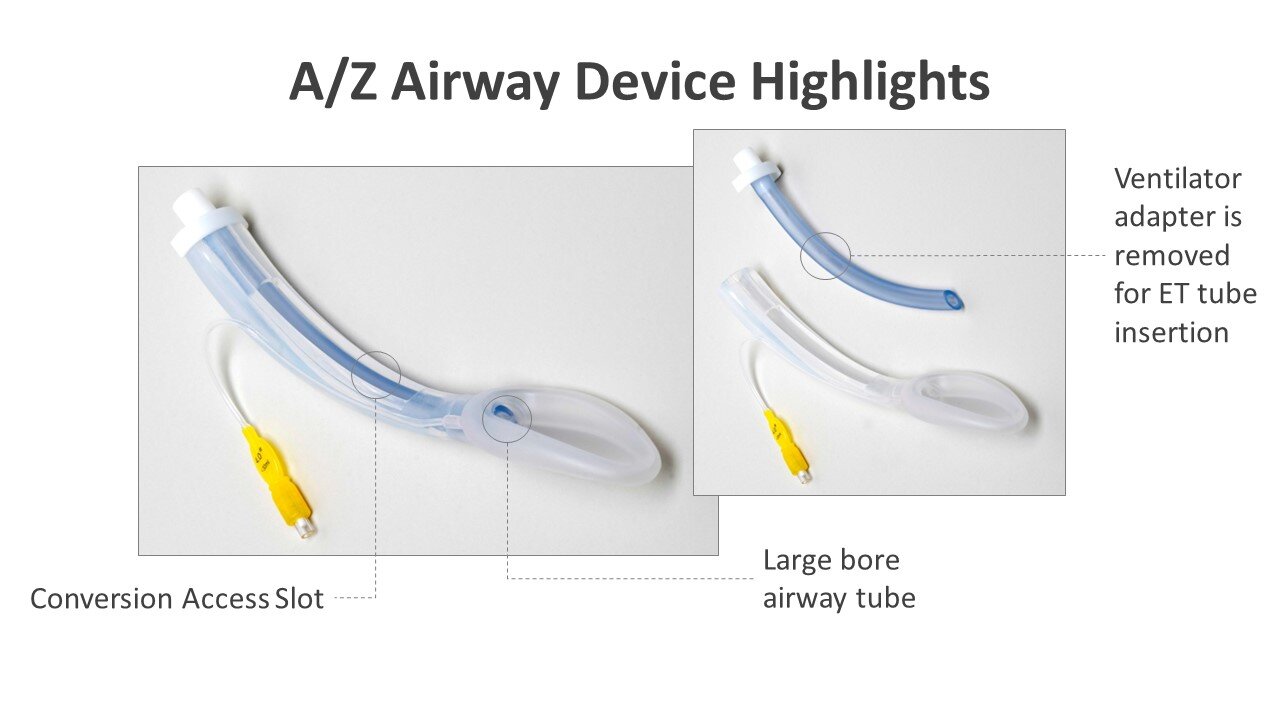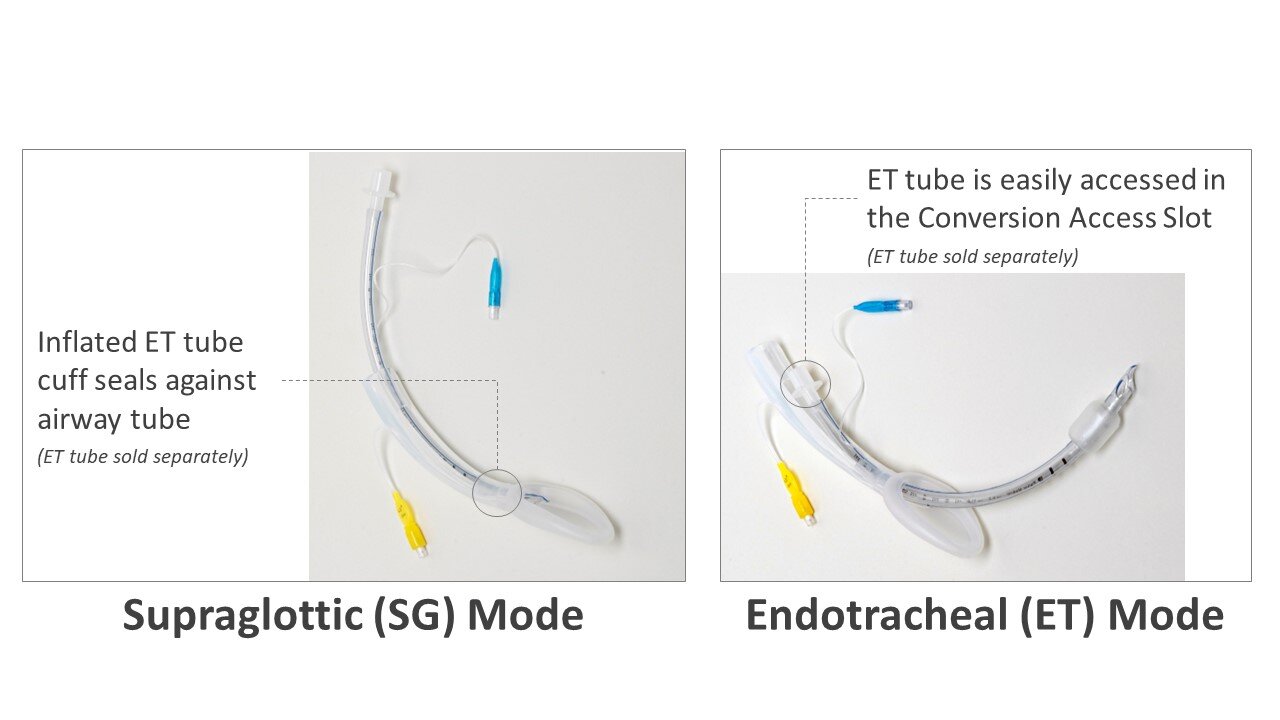A/Z Airway
The first device which allows the clinician to switch between the two types of ventilation in a single device!

About
Drs. Rafi Avitsian and Andrew Zura recognized a need in the airway management market for clinicians to have the ability to switch between a supraglottic airway and endotracheal intubation, which is currently not possible with traditional airways. This led to the A/Z Airway and its unique ACCESS SLOT, which allows the clinician to switch between the two types of ventilation in a single device.
.png?width=1080&height=1080&name=az%20(1).png)
The Need
A supraglottic airway is placed higher in the airway, above the vocal cords, and is often used as a rescue method when endotracheal intubation is difficult to achieve. This method is easily and widely learned. An endotracheal tube (ETT) is placed lower, through the vocal chords into the trachea and is the “Gold Standard” in airway management. Both of these airways have their own use cases, but being able to switch back and forth between the two allows clinicians to maintain continuous ventilation in the patient regardless of situational need.



About Rafi Avitsian
Rafi Avitsian M.D. FASA, is a Professor of Anesthesiology in the Multispecialty Anesthesiology Division of the Department of Anesthesiology in Cleveland Clinic. He is the immediate past of the Cleveland Clinic Medical Staff Office, as well as the past program director of Neuroanestheisology Fellowship. He is one of the founders of International Council for Perioperative Neuroscience Training (ICPNT) which is the accreditation body of Neuroanesthesiology Fellowships worldwide. He is the past president of Society for Neuroscience in Anesthesiology and Critical Care (SNACC), American Board of Anesthesiologists Applied Senior Examiner, a member of the Association of University Anesthesiologists & recipient of ASA-SEA Distinguished Education Award. He was awarded the Socisty for Neuroscience in Anesthesiology and Critical Care Teacher of the Year, Lifetime Educator award in 2023. He is a founding board member of International Center for Professional Development (ICPD) in Armenia.
His academic interest is mostly in brain tumors, anesthetic methods for seizure surgery, brain protection and outcomes of spine surgery as well as Difficult Airway Management. His clinical studies are mostly directed to finding ways to improve the outcome after neurosurgical procedures. He is also interested in medical innovations with many filed and published patents for medical devices.
More than 50 published peer reviewed manuscripts, two book chapters and many abstract presentations also highlights his academic achievements. He is on the editorial board of Journal of Neurosurgical Anesthesiology and an ad hoc reviewer for Anesthesiology, Anesthesia Analgesia, World Neurosurgery Journal.
Airway Rescue
When encountering a difficult airway, the A/Z Airway will allow easy conversion from supraglottic ventilation to intubation while safely maintaining ventilation in the patient. If a decision is made to perform a retrograde intubation, the A/Z Airway will allow ventilation, easy guidewire capture as well as serve as a conduit for the intubation process.
Prolonged Intubation /Staged Extubation
Prolonged intubation poses a number of risks to patients, most notably damage to the vocal cords as well as the tracheal mucosa. The ability to retract a patients endotracheal tube into the A/Z Airway for intervals of time could contributed to reduce the incidence of these complications occurring. The process of extubation in critically ill patients frequently takes a long time as often it is difficult to predict if a patient will tolerate being extubated. The A/Z Airway provides an intermediate step to allow the clinicians to evaluate the patient’s respiratory status as well as laryngeal function prior to being fully extubated and facilitating easy rapid reintubation if required.
Smooth Wakeup
A supraglottic airway is far more tolerable with less sedation than an endotracheal tube. By switching from heavier sedation with an ETT to lighter sedation with the supraglottic airway, patients can come out of anesthesia smoother and more comfortably than directly from endotracheal intubation.
Improved Tracheostomy Safety
When a tracheostomy is performed on a patient it is not uncommon for the surgeon to puncture the cuff of the endotracheal tube. Use of the A/Z Airway would allow the endotracheal tube to be retracted safely into the body of the A/Z Airway while continuing to ventilate the patient.